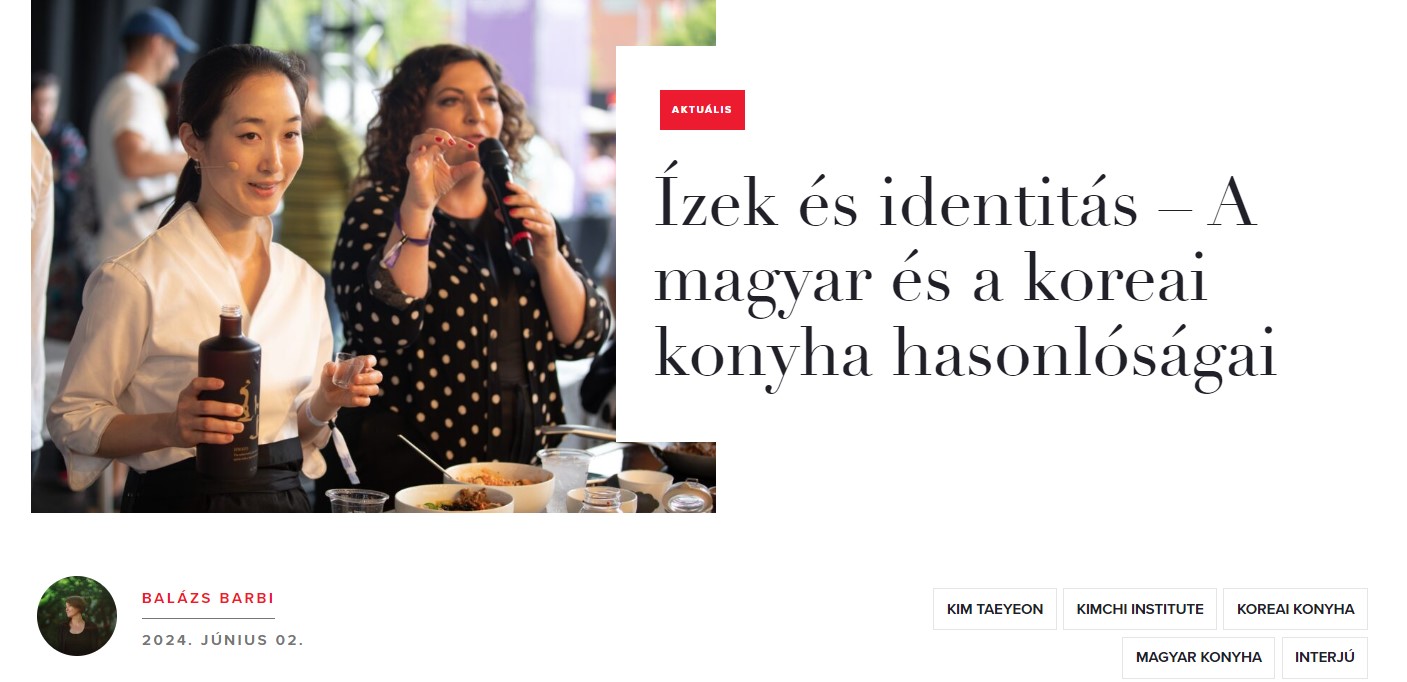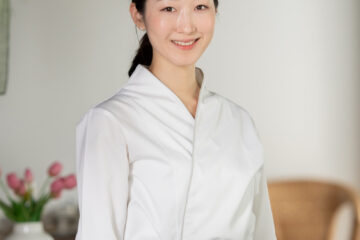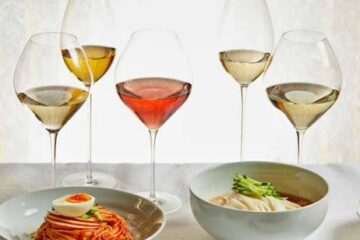Interview with Nők Lapja (leading women’s magazine in Hungary)
Taeyeon had an interview with Nők Lapja which was published nationwide in Hungary.
Nők Lapja is the leading women’s magazine in Hungary, with more than 50 years of history.
During the interview, Taeyeon talked about characteristics and similarities between Korean and Hungarian cuisine & the recent event at Gourmet Festival 2024, but also about her career change, the mission and projects of The Kimchi Institute, and much more!
Read the article here (in Hungarian).
Below is the translated version in English.

Flavors and identity – Similarities between Hungarian and Korean cuisine
Many people know the flagship of South Korean cuisine, kimchi, but this colorful and interesting culinary art has a lot to say. Not to mention that the fusion of Korean and Hungarian food creates great dishes. Interview with Kim Taeyeon.
More and more people here also know that kimchi is one of the most well-known dishes of Korean cuisine, enjoying great popularity worldwide. The most important mission of the Kimchi Institute , however, is to make not only kimchi , but also the otherwise endless variety of Korean cuisine, and the Korean culture organically connected to it more and more widely known.
Kim Taeyeon, the head of the Kimchi Institute, visited our country for many times to spread the word about one of the most colorful Asian cultures with kitchen gastro presentations and workshops. We asked Kim about the similarities between Hungarian and Korean cuisine, and what he takes with her from Hungarian culinary culture.
When did you decide that you would work in gastronomy?
I belong to Generation Y, and like many of my peers, I was also hit by a so-called “quarter-life” crisis. After a few years of work, I felt I needed a change. Gastronomy has always been close to my heart, I used to work in the HR department of a multinational company in Korea, but I decided to change and work in gastronomy. I went to a culinary training course where I learned basic cooking techniques, then I studied with excellent Korean masters to immerse myself as much as possible in the world of Korean cuisine. Since then, I have been lucky enough to spread the good news of our cuisine all over the world, not only through the Kimchi Institute, but also as an official ambassador of Korean cuisine.

Kimchi from Kim Taeyeon’s kitchen (Photo: Korean Cultural Institute)
Why is this mission important to you?
When I got stuck in my previous career, I realized that I wanted a job that I could do with passion and that would constantly push me to professional development. The world of the kitchen is just like that for me. I also wanted to nurture our family traditions through food, as I grew up in a family where good food was always highly valued,
and my grandmother and mother are still busy preparing seasonal dishes and using traditional preservation methods in every season
. This has always filled me with excitement and pride, so I decided to take part in nurturing the traditions.
How do you support the preservation of tradition through your work?
I organize and participate in Korean gastronomic events, give lectures and workshops. Last fall, for example, together with the Buddhist monk Jeong Kwan, we told the best Hungarian chefs in Budapest about Korean temple cuisine. I really like coming to Hungary, because here I always meet a sincere interest in Korean culture, so I think
Hungary is an excellent place to present Korean food culture and to spread the word throughout Europe.
What is the most important part of Korean culinary heritage for you?
The most diverse fermentation processes, which have a long tradition in our area, I could even say that this is the soul of our kitchen. While most people are familiar with kimchi , there is also jang (a soy bean-based fermented Korean sauce), which is used to flavor more than 80% of Korean dishes and is a cornerstone of Korean cuisine, which comes in countless forms. Fermented foods are not only very tasty, but also healthy and sustainable, and I think that we should put a lot of emphasis on the latter worldwide.
You have been to Hungary several times, what do you think are the most important similarities and differences in the habits of Hungarians and Koreans?
I met many people in this beautiful country, but of course I wouldn’t dare to say that I know what Hungarians are like. However, I find that both of us (Hungarians and Koreans) are very proud of our culture and language and who we are. I think it’s because
the history of both countries took place in such a way that many times they had to fight hard to maintain their identity.
The kitchen is also an important part of this identity. Both Koreans and Hungarians appreciate good cuisine and boast a rich food culture. We both love to share and introduce our own food culture to the people of other countries. The biggest difference I noticed is that the Hungarians are a bit more relaxed than us, who lead a very tight, rushed, so-called “ppali ppali” lifestyle on a daily basis, which has its advantages and disadvantages, but it’s definitely a very Korean thing.

Acacia flowers are a popular ingredient in Korean cuisine – the picture shows fried acacia flowers (Photo: Korean Cultural Institute)
What differences and similarities can be observed in our kitchens? Are there dishes in the cuisines of the two peoples that are very similar?
Yes, I actually see a lot of similarities between Korean and Hungarian cuisine. First of all, basic ingredients in both cuisines are (chili) peppers and garlic. Second, there are many types of soups in both cuisines, and Hungarian goulash, for example, is very similar to Korean yukgaejang. In addition, both kitchens have a tradition of preserving seasonal products.
In Korea, they make kimchi in late autumn, and in Hungary, sauerkraut.
And finally, a common feature is that the head-to-tail principle prevails in both kitchens. It was a pleasant surprise for me to see meat parts such as tripe, pig’s ears, and liver in Hungarian cuisine – Korean cuisine also likes to use these. By the way, there are many similar dishes, and as I taste more and more and get to know Hungarian cuisine, I notice these similarities more and more. One such similarity is that of kimchi -jjigae (a type of kimchi stew) and stuffed cabbage. The main ingredients of both dishes are fermented cabbage (kimchi and sauerkraut) and pork, and the flavors are very similar.
If you haven’t tried kimchi stew yet, I highly recommend it, because you will definitely like it.
And the differences?
Perhaps the most important is the use of rice. On the one hand, rice is at the center of Korean food, rice is our base, even a main dish, everything is organized around it, the rice itself has side dishes, which we call banchan. Koreans also like their rice a little stickier than it is usually made in Hungary.
As far as I know, the Hungarian and Korean climates are quite similar. What seasonal crops are there now and how do you use them? For example, do you use elder or acacia?
Yes, the climate in Hungary and Korea is really similar. We also have four different seasons, although Korean seasons are divided into 24 micro-seasons. We are currently in season 8, with plenty of sunshine and all the lush green vegetation growing, filling the fields and mountains.
In this season, for example, the yield of bamboo shoots is very abundant. Bamboo shoots are reminiscent of the purity of late spring, especially crisp and slightly fragrant. After about an hour of cooking, they can be used in many ways, for example for salad, soup, pancakes, and even for rice, this is the seasonal crop for us. Elderberry is not available in Korea, but acacia is even more so, which is one of my favorite ingredients. In Korea, many people preserve it with sugar to make syrup, aka acacia-csong, but my favorite way to make it is acacia-jeon (acacia flower doughnut) or acacia-twigim (fried acacia flower). It’s so fragrant that eating it feels like putting spring right in your mouth. This is similar to how elderflowers are baked in beer batter in Hungary.

Bibimbap is a very Korean dish, but it can also be made with all Hungarian ingredients (Photo: Korean Cultural Institute)
What is the most interesting Hungarian food you have tasted and why did you like it?
I really like Hungarian food cooked on an open fire, and once in Baja I tasted fish soup cooked on an open fire in a huge cauldron. The carp was perfectly textured and juicy and the soup was incredibly flavorful with a hint of smokiness. For me, this was the most interesting and memorable food experience so far, and
I think Hungarians can be rightly proud of this kind of food!
I haven’t tried lecho or goulash made on an open fire yet, but I’m sure it’s also very delicious.
If we Hungarians had to try only one Korean dish, what would it be?
Definitely the bibimbap (which is a rice dish mixed with vegetables and meat). That’s why I chose this dish for the Gourmet Festival workshop, where I cooked it last week, and to my great joy, the workshop was filled up in no time. So bibimbap rice mixed with different seasonal vegetables and meats. There’s no rule about what to put in bibimbap, so I always choose seasonal vegetables. All the vegetable and meat toppings are cooked separately and then added together to the rice. At the end, it is mixed with gochujang (Korean chili pepper paste) and a little sesame oil.
I love this dish because it embodies the essence of Korean cuisine: balance, harmony, variety, texture, and a variety of flavors.
At the festival, I wanted to show that bibimbap can also be made from Hungarian seasonal ingredients, and I wanted to bring it closer to people. This is how I made the bibimbap with Hungarian rice, Mangalica pork and seasonal Hungarian vegetables, such as kohlrabi. The best thing was that I made the gochujang (Korean red chili paste) with Hungarian paprika powder, so it got very pleasant, mild and fragrant flavors.
What innovative ideas do you draw from Hungarian cuisine that you could possibly incorporate into Korean cuisine?
One of the inspirations I drew from Hungarian cuisine is the use of animal fat. Although fat was an important part of Korean cuisine in the northern regions, it has now been almost forgotten. After reading that in the past, fat was widely used to fry jeon (Korean pancakes), I adopted this in my own kitchen, and when I fried kimchi-jeon (kimchi pancakes) with mangalica fat, it turned out as crispy and tasty as ever .
Featured image: Kim Taeyeon’s bibimbap workshop at the Gourmet Festival, Korea Cultural Institute



0 Comments